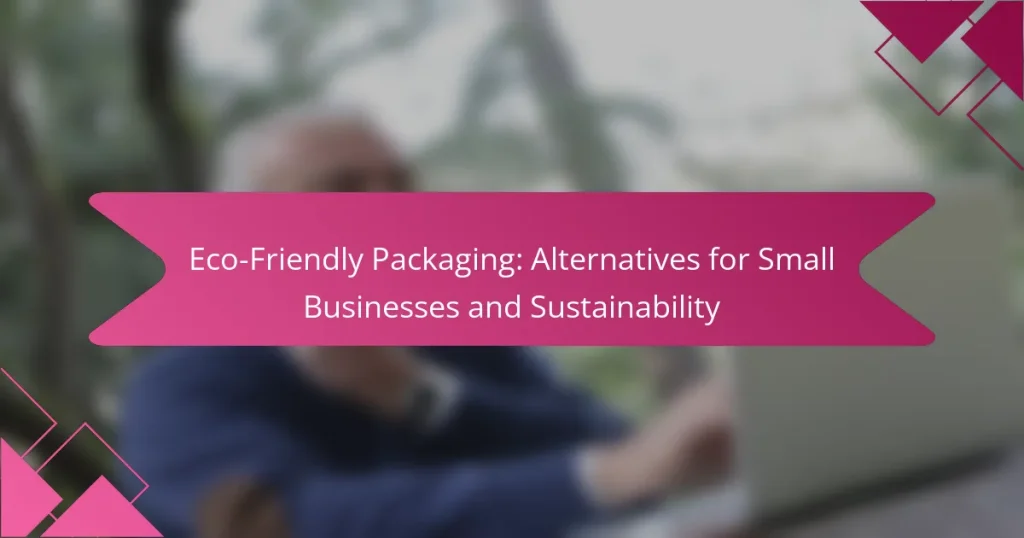Sustainable living solutions are essential for reducing waste and promoting environmental health. By adopting effective strategies such as composting, recycling, and minimizing single-use plastics, individuals and businesses can significantly decrease their waste footprint. Simple changes in daily habits and responsible practices can lead to a more sustainable future for our planet.
Composting System: Steps for Beginners and Best Practices
Upcycling Household Items: Creative Ideas, Benefits and Techniques
Eco-Friendly Packaging: Alternatives for Small Businesses and Sustainability
What Are Effective Waste Reduction Strategies in the US?
Effective waste reduction strategies in the US focus on minimizing waste generation through various practices. These strategies include composting, recycling, reducing single-use plastics, promoting zero-waste stores, and encouraging bulk buying.
Composting organic waste
Composting organic waste involves collecting food scraps and yard waste to create nutrient-rich soil. This process reduces the amount of waste sent to landfills and lowers greenhouse gas emissions. Households can start composting by using a bin or pile in their backyard or utilizing community composting programs.
To effectively compost, avoid adding meat, dairy, and oils, which can attract pests. Instead, focus on fruit and vegetable scraps, coffee grounds, and dry leaves. Regularly turning the compost helps speed up decomposition and ensures a balanced mix of green and brown materials.
Implementing recycling programs
Recycling programs are essential for diverting materials from landfills and conserving resources. Many communities in the US have established curbside recycling services that accept paper, plastics, metals, and glass. Residents should familiarize themselves with local guidelines to ensure proper sorting and contamination-free recycling.
Consider participating in local recycling events or drop-off centers for items not accepted in curbside programs, such as electronics or hazardous waste. Educating others about the importance of recycling can also enhance community participation and effectiveness.
Reducing single-use plastics
Reducing single-use plastics is crucial for minimizing plastic waste in the environment. This can be achieved by opting for reusable bags, bottles, and containers instead of disposable options. Many cities in the US have implemented bans or fees on plastic bags to encourage this shift.
When shopping, choose products with minimal packaging or those made from sustainable materials. Additionally, support businesses that prioritize eco-friendly practices, as this can drive broader changes in the market.
Promoting zero-waste stores
Zero-waste stores focus on selling products without packaging, allowing customers to bring their own containers. These stores help reduce waste by offering bulk items, which minimizes packaging waste and encourages sustainable consumption. Many urban areas in the US now feature zero-waste shops.
Shopping at zero-waste stores can save money in the long run and promote a more sustainable lifestyle. Consider starting with basic items like grains, nuts, and cleaning supplies, and gradually transition to more products as you adapt to this shopping model.
Encouraging bulk buying
Encouraging bulk buying helps reduce packaging waste and often saves money. Purchasing items in larger quantities can minimize the frequency of shopping trips and lower the overall environmental impact. Many grocery stores and co-ops in the US offer bulk sections for various products.
When buying in bulk, focus on non-perishable items like grains, pasta, and canned goods. Always check for expiration dates and consider sharing bulk purchases with friends or family to avoid waste. Remember to bring your own containers to minimize additional packaging.
How Can Households Reduce Waste?
Households can significantly reduce waste by implementing practical strategies that focus on minimizing consumption and maximizing reuse. Simple changes in daily habits can lead to substantial reductions in the amount of waste generated.
Adopting minimalism
Minimalism encourages individuals to prioritize quality over quantity, leading to less clutter and waste. By focusing on essential items and eliminating unnecessary possessions, households can reduce the demand for new products, which often contribute to waste.
To adopt minimalism, start by decluttering your living space. Consider the “one in, one out” rule: for every new item brought into the home, one should be removed. This practice helps maintain a balanced environment and reduces waste accumulation over time.
Using reusable containers
Switching to reusable containers is a straightforward way to cut down on single-use plastics and other disposable materials. Investing in high-quality, durable containers can save money in the long run while also benefiting the environment.
Consider using glass or stainless steel containers for food storage, which can last for years. For beverages, opt for reusable water bottles and coffee cups. This transition not only reduces waste but also encourages healthier habits, such as preparing meals at home.
Participating in community swaps
Community swaps are events where individuals can exchange items they no longer need, promoting reuse and reducing waste. These gatherings foster a sense of community while allowing participants to find new homes for their unwanted goods.
To participate, look for local swap events or organize one in your neighborhood. Items commonly exchanged include clothing, books, toys, and household goods. This practice not only helps reduce waste but also encourages sustainable consumption habits within the community.
What Role Do Businesses Play in Waste Reduction?
Businesses play a crucial role in waste reduction by adopting practices that minimize waste generation and promote sustainability. This can involve implementing eco-friendly processes, utilizing sustainable materials, and encouraging responsible consumer behavior.
Implementing sustainable packaging
Businesses can significantly reduce waste by using sustainable packaging materials, such as biodegradable, compostable, or recyclable options. Switching to these materials not only lessens environmental impact but can also appeal to eco-conscious consumers.
Consider using minimal packaging designs that require fewer resources and generate less waste. For example, brands like Unilever have committed to making all their plastic packaging recyclable or reusable by 2025, setting a standard for others to follow.
Offering repair services
By offering repair services, businesses can extend the lifespan of their products and reduce waste. This approach encourages consumers to repair rather than replace items, which can be more cost-effective and environmentally friendly.
For instance, companies like Patagonia have established repair programs that allow customers to send in worn items for fixing. This not only fosters customer loyalty but also promotes a culture of sustainability.
Creating take-back programs
Take-back programs enable businesses to reclaim products at the end of their life cycle, ensuring proper recycling or disposal. These initiatives can significantly reduce landfill waste and promote circular economy principles.
Many electronics companies, such as Apple, offer take-back schemes where customers can return old devices for recycling or refurbishment. This not only helps the environment but can also provide incentives for consumers, such as discounts on future purchases.
What Are the Benefits of Waste Reduction?
Waste reduction offers numerous advantages, including decreased landfill contributions, cost savings, and improved community health. By minimizing waste, individuals and organizations can contribute to environmental sustainability while also benefiting economically and socially.
Lowering landfill contributions
Reducing waste directly decreases the amount of material sent to landfills, which helps conserve space and resources. Landfills can take years to decompose waste, leading to environmental issues such as soil and water contamination. By adopting practices like recycling, composting, and reusing items, communities can significantly lower their landfill contributions.
For example, recycling paper and cardboard can reduce landfill waste by up to 70%. Implementing local recycling programs and encouraging residents to participate can lead to substantial reductions in waste sent to landfills.
Saving money
Waste reduction can lead to significant financial savings for households and businesses alike. By minimizing waste, individuals can lower their disposal costs and reduce the need to purchase new items. Simple actions, such as buying in bulk or choosing reusable products, can lead to long-term savings.
For instance, using reusable shopping bags instead of single-use plastic bags can save a household several dollars each year. Businesses that implement waste reduction strategies often find that they can cut operational costs and improve their bottom line.
Enhancing community health
Reducing waste contributes to better community health by minimizing pollution and promoting cleaner environments. Less waste in landfills means fewer harmful emissions and toxins that can affect air and water quality. This leads to healthier living conditions for residents.
Communities that focus on waste reduction often see increased public engagement and awareness about environmental issues. Initiatives such as community clean-up events and educational programs can foster a sense of responsibility and pride, ultimately enhancing the overall health and well-being of the community.
What Criteria Should Be Considered for Waste Reduction Initiatives?
When planning waste reduction initiatives, consider factors such as environmental impact, community engagement, and cost-effectiveness. These criteria help ensure that strategies are not only sustainable but also practical and beneficial for all stakeholders involved.
Cost-effectiveness
Cost-effectiveness is crucial for waste reduction initiatives as it determines the financial viability of the strategies implemented. Evaluating the costs associated with waste management versus the savings from reduced waste can guide decision-making.
Consider the initial investment against long-term savings. For instance, investing in recycling programs may have upfront costs but can lead to significant savings on disposal fees and resource recovery over time. Conducting a cost-benefit analysis can help identify the most financially sound options.
Additionally, explore local incentives or grants that may offset costs. Many municipalities offer financial support for businesses and organizations that adopt sustainable practices, making waste reduction more affordable. Always assess the potential return on investment before committing to any initiative.



